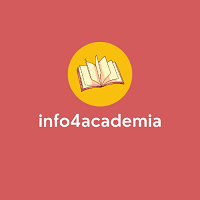Development Of The Potential Of The Angke Kapuk Mangrove Forest Natural For Ecotourism In Kamal Muara Village, Penjaringan Sub-District, North Jakarta
Abstract
Mangrove forest ecosystem has various ecological, socio-economic and cultural functions for society, such as for nature tourism or ecotourism activities. The purpose of this article is to discuss the potential for the development of the Angke Kapuk Mangrove Forest Nature Park (TWA), North Jakarta for ecoturism activities. The research method used in this study was qualitative method. The results of the study showed that there are various strengths that are potential for the Angke Mangrove Forest to be developed for ecotourism, such as the strategic location of tourist attractions, the presence of natural tourism objects, and the existence of interesting a variety of flora and fauna species of mangroves for visitors. However, the Angke Kapuk Mangrove Forest still has some weaknesses. Therefore, for the development of these natural tourism or ecotourism areas in the future, it is necessary to pay attention to the principles of ecotourism, such as tourism activities must minimize negative impacts on the environment, the need to increase the active participation of local residents.
Keywords
Full Text:
PDFReferences
Arifanti, V.B. ( 2022). Mangrove Management and Climate Change: A Review in Indonesia. IOP
Conf.Series: Earth and Environmental Science 487 (2020) IOP Publishing. DOI:10.1088/1755-1315/487/1/012022.
Ahmed, N., & Glaser, M. (2016). Coastal aquaculture, mangrove deforestation and blue carbon
emissions: Is REDD+ a solution? Marine Policy, 66, 58–66. http://doi.org/10.1016/j.marpol.2016.01.011.
Azzahra, P.R., Sumarga, E., Sholihah, A. (2022). Analisis Kesehatan Mangrove di Taman Wisata Alam
Angke Kapuk, Jakarta Utara. J.Ilmu Teknol. Kayu Tropis 20 (1): 40-51.
Brander, L. M., Wagtendonk, A. J., Hussain, S. S., McVittie, A., Verburg, P. H., de Groot, R. S., & van
der Ploeg, S. (2012). Ecosystem service values for mangroves in Southeast Asia: A meta-analysis and value transfer application. Ecosystem Services, 1(1), 62–69. http://doi.org/10.1016/j.ecoser.2012.06.003.
Carasscuilaquilla- Henao, M., Ban, N., Rueda, M., Juanes, F. (2019). The Mangrove-Fishery Relationship:
A Local Ecological Knowledge Perspective. Marine Policy 108 (2019) 103656. Pp.1-11.
Friess, D. A., & Webb, E. L. (2014). Variability in mangrove change estimates and implications for the
assessment of ecosystem service provision. Global Ecology and Biogeography, 23(7), 715–725. http://doi.org/10.1111/geb.12140.
Ginantra, I.K. (2022). Mangrove Conservation: An Ecosystem Approach. DOI:
5772/intechopen.109253.
Halimatusa’diyah, E., Tika, S.R., Ananda, R.P., Suhendra, A., Julpia, I., Tanjung, M.S., Pohan,
S.Q.S., Hulu, S.., Fatmaya, P., Hujaibah, P. 2022. Pemanfaatan Hutan Mangrove Sebagai Habitat Untuk Biota Laut. Jurnal Biosense 5 (2): 131-143.
Hamilton, S. E., & Casey, D. (2016). Creation of a high spatio-temporal resolution global database of
continuous mangrove forest cover for the 21st century (CGMFC-21). Global Ecology and Biogeograph, 25, 729–738. http://doi.org/10.1111/geb.12449.
Hernandi, K., Sukojo, B. M., & Parwati, E. (2013). Studi tingkat kerapatan mangrove menggunakan
indeks vegetasi. Jurnal Teknik Pomits, 4(4), 1–6.
Iskandar, J. (2018). Etnobiologi, Etnoekologi dan Pembangunan Berkelanjutan. Yogyakarta: Plantaxia
Iswandaru, D., Khalil, A. R. A., Kuniawan, B., Febryano, R. P. I. G., & Winarno, G. D. (2019). Kelimpahan
dan keanekaragaman jenis burung di hutan mangrove KPHL Gunung Balak. Indonesian Journal of Conservation, 3(1), 99– 110.
Kusmana, C. (2015). Integrated sustainable mangrove forest management. Jurnal Pengelolaan Sumberdaya
Alam Dan Lingkungan, 5(1), 1–6.
Lindsay, H.E. 2003. Ecotourism: The promise and perils of environmentally-oriented travel. Cambridge
Scientific Abstracts. www.csa.com/discoveryguides/ecotour/overview.php.
Malik, A., Mertz, O., & Fensholt, R. (2017). Mangrove forest decline : consequences for
livelihoods and environment in South Sulawesi. Regional Environmental Change, 17(1), 157–169. http://doi.org/10.1007/s10113-016-0989-0.
Newing, H., Eagle, C., Puri, R., Watson, C.W. (2011). Conducting Research in Conservation : A Social
Science Perspective. London and New York: Routledge.
Noor, Y.R., Khazali, M., Suryadiputra, I.N.N. (1999). Panduan Pengenalan Mangrove di Indonesa. Bogor:
Wetlands Internasional Indonesia Programme.
Pratiwi, R., and Rahmat. (2015). Sebaran Kepiting Mangrove (Crustacea: Decapoda) Yang
Terdaftar di Koleksi Rujukan Pusat Penelitian Oseanografi LIPI 1960-1970. Berita Biologi 14 (2): 195-202.
Putra, I.S., Gumilang, R.S (2019). Dampak Pulau Reklamasi Terhadap Sedimentasi dan Potensi
Perkembangan Manrove di Pesisir Teluk Jakarta (Muara Angke). Jurnal Sumber Daya Air 15 (2):81-94. DOI: 10.32679/jsda.v15i2.587.
Rangkuti, F. (2016). Analisis SWOT. Jakarta : PT. Gramedia Pustaka Utama
Riefani, M. K., & Arsyad, M. (2019). Spesies burung di Kawasan Ekowisata Mangrof Pagatan
Besar, Kabupaten Tanah Laut, Indonesia. Prosiding Seminar Nasional Lingkungan Lahan Basah, 4(1), 192–196
Rizkyprima, A, Zid, M., Setiawan, C. (2023). Konservasi Kawasan Ekowisata Mangrove Angke
Kapuk Terhadap Peninglatan Ekonomi. Jurnal Ekonomika dan Bisnis. 10 (1): 81-88.
Rumondang, A.L., Kusmana, C., Budi, S.W. (2021). Species Composition and Structure of Angke
Mangrove Protected Forest, Jakarta, Indonesia. Biodiversitas 22 (9): 3863-3871. DOI:10.13057/biodiv/d220932.
Sasmito, S.D., Basyuni, M., Kridalaksana, A., Saragi-Sasmito, M.F., Lovelock, C.E., Murdiayo, D. (2023).
Challenges and Opportunities For Achieving Sustainable Goals Through Restoration of Indonesia’s Mangroves. Nature Ecology & Evolution 7: 62-70. https://doi.org/10.1038/s41559-022-01926-5.
Sasongko, D.A., Kusmana, C., Ramadan, H. (2023). Strategi Pengelolaan Hutan Lindung Angke
Kapuk. Jurnal Pengelolaan Sumberdaya Alam dan Lingkungan 4 (1): 35-42.
Soemarwoto, O. (2008). Pembangunan Berkelanjutan: Provinsi Daerah Istimewa Yogyakarta.
Badan Perencanaan Derah, Provinsi Daerah Istimewa Yogyakarta.
Sofian, A., Kusmana, C., Fauzi, A., Rusdiana O. (2020). Evaluasi Kondisi Eklosistem Mangrove
Angke Kapuk Teluk Jakarta dan Konsekuensinya Terhadap Jasa Ekosistem. Jurnal Kelautan Nasional 15 (1): 1-12. DOI: http://dx.doi.org/10.15578/jkn.v15i1.7722
Zulfandi., A’ini, Z.F., Soenarno, S.N. (2023). Diversitas dan Pakan Burung Pantai Pada Hutan Mangrove
Taman Wisata Alam Angke Kapuk. EduBiologia 3 (1):1-7. DOI: q 10.30998/edubiologia.v3i1.15320.
DOI: https://doi.org/10.32535/ijabim.v8i3.2659
Refbacks
- There are currently no refbacks.
Copyright (c) 2023 JULIATI PRIHATINI

This work is licensed under a Creative Commons Attribution-NonCommercial-ShareAlike 4.0 International License.
International Journal of Applied Business and International Management (IJABIM)
ISSN 2614-7432 (Print) | ISSN 2621-2862 (Online)
DOI Prefix: 10.32535 by CrossRef
Published by AIBPM Publisher
JL. Kahuripan No. 9, Hotel Sahid Montana, Malang, Indonesia
Email: journal.ijabim@gmail.com
Phone: +62 341 366222
Website: https://aibpmpublisher.com/
Governed by
Association of International Business and Professional Management
Email: admin@aibpm.org
Website: https://www.aibpm.org/
Licensing Information

The International Journal of Applied Business and International Management (IJABIM) is licensed under a Creative Commons Attribution-NonCommercial-ShareAlike 4.0 International License .













